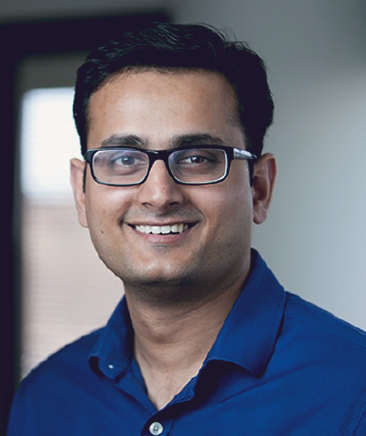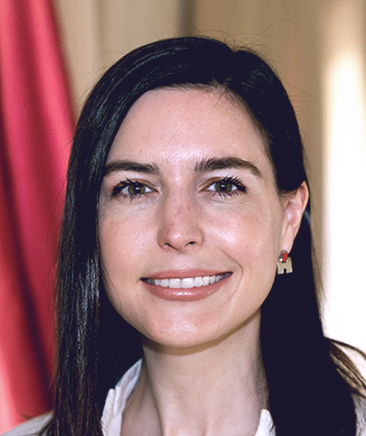U.S. oncologists are becoming increasingly diverse in composition, practice setting, geography and age, all of which make them a difficult group for pharma to understand. According to the American Society of Clinical Oncology’s 2022 report on the state of cancer care in the U.S., oncologists are spread across approximately 1,600 sites of care, with 10% working in rural environments and 22% approaching retirement age. And this is just a portion of the oncology workforce—to say nothing of the diversity of the patients they treat.
For pharma to engage this heterogeneous group more effectively, they need to have a better understanding of their needs and patient base. This isn’t a new concept of course, but there are better tools now, driven by data and technology, that can give pharma better insights and characterizations. One such solution is an off-the-shelf, cross-tumor data product developed by ZS called PANORAMATM, which provides deep understanding of the treater universe via data-driven segmentation to drive key activities. ZS recently used PANORAMA to help make sense of the U.S. oncologist market, which includes 19,000 oncologists. The insights we gleaned from our analysis, which we describe in detail below, can help pharma companies:
- Shape portfolio strategy. Pharma companies in the pre-launch phase need to know more about oncologists and their treatment choices and understand how others, such as pulmonologists in lung cancer, influence a patient’s treatment journey. This is especially important for pharma companies that are new to oncology, as well as emerging pharma players that need to evolve their strategy to include label expansions.
- Track year-over-year trends. Pharma companies need a clear understanding of the addressable patient population based on insights drawn from remission rates, real-world treatment sequencing choices and other factors. Pharma should also study the landscape and evaluate the impact of regulatory trends on standard of care (SOC) treatments. These insights should be infused across functional teams, including:
- Clinical and R&D teams that need insights for targeted recruiting practices and optimizing site selection to reach more patients and oncologists.
- Medical affairs, which can use this information to tailor healthcare professional (HCP) education by allocating resources and educational opportunities by patient type and who HCPs engage with. These insights can help identify nontraditional physicians, such as non-oncologist specialists like pulmonologists, involved in the patient journey, and the degree of influence these specialists have.
- Commercial teams, who need these insights to understand geography, clinic type, oncologist treatment patterns and more, to shape engagement and communication strategies for oncologists across tumor types.
- Payer medical teams need data on where more aggressive payer control is impacting therapy uptake, especially in tumor areas where there is high fragmentation, such as non-small cell lung cancer. Insights can inform why companies need to enhance the value story to increase formulary presence.
Oncologists are increasingly diverse—and so is their patient pool
Our investigation began by looking at the U.S. oncologist universe, which includes 19,000 oncologists, who treat 2.8 million patients across 26 of the most prevalent oncology tumor types, from 2019 to 2022. We included physicians with board certifications in relevant specialties, including medical oncology, hematology oncology, pediatric oncology, who were actively practicing during the study period. We defined “active” as has having more than 50 oncology patients.
To make sense of this population, we looked for commonalities among the patients these oncologists were treating. Building on previous ZS work, we knew that the patient pool would be diverse for each treater. Our previous analysis found only one in 10 oncologists spends 80% of their time treating one type of tumor. Our PANORAMA analysis found 90% of oncologists treat at least nine tumor types across their patients.
Based on common characteristics of the patients they treat, we ultimately decided to break down oncologists into the following categories (Figure 1):
- Specialist treaters. More than 60% of their patients are diagnosed with tumor types that can be leveled up to a body system, such as urinary and gynecological.
- Solid tumor specialists. Specialists that treat common solid indications including breast, prostate and lung cancer.
- Organ system specialists: Oncologists that specialize in indications of specific regions or organs of the body.
- Onco-generalists. Oncologists treating across multiple tumor types and no one specific body system. They commonly treat five or more tumor types and have less than 50% of any tumor type in their patient population.
Upon further analysis, we found that the organ system specialists were by far the least populous group in our study, with only 3,200 oncologists concentrated in academic settings. Conversely, we found 6,500 onco-generalists primarily in community settings. The biggest group in our analysis were the 10,000 oncologists in the in the solid tumor specialists group, where 55% were found in a community setting.
This latter data point highlights the growing importance of community oncologists as they develop more specialist capabilities. Furthermore, across our entire data set, academic specialists managed 185 patients per oncologist in the period we examined, while community oncologists saw an average of about 350 patients during the same period.
Implications and challenges for pharma
- Community oncologists are a valuable inroad for pharma to reach more patients in more diverse settings—and it’s important the industry consider the volume of information that these oncologists are receiving, as well as the number of tumor types they need to keep track of when considering the addition of new therapies.
- This is particularly important given the growing number of novel modalities (such as antibody-drug conjugates, T-cell engagers, targeted radiopharmaceuticals, cell therapy) entering the community setting over the next five years. This will require increased support and education for community oncologists.
The influence of oncologist specialization on treatment choice
To further understand the relevance of the oncologist categories and whether they conferred meaningful differences in the oncologist’s treatment selection, we examined two aspects of treatment choice:
- Adherence to SOC medications
- How many treatments these oncologists typically selected from, which we called their “consideration set”
We defined the SOC in each tumor type as a therapy used by at least 85% of oncologists treating that tumor type, with a very low payer rejection rate.
When considering the overall SOC, onco-generalists tend to adhere to the SOC across nearly all tumor types, whereas specialists are a bit more varied. Two striking examples where SOC usage differed between specialists and onco-generalists were ovarian and biliary tract cancer (BTC), where less than 50% of specialists do not adhere to the SOC.
Of course, the reason for this disparity is likely multifactorial. We know that gynecological oncologists will perform primary surgical cytoreduction as a therapeutic and diagnostic in patient evaluation, leading to far more procedure codes in their practice. Following primary cytoreduction, these specialists may be jointly managing patients with a medical oncologist to prescribe systemic therapies, thereby lowering the specialists that adhere to the systemic SOC. More broadly, ovarian and BTC are also typically diagnosed in later stages, with fewer approved therapies and likelier clinical trial enrollment, which lessens adherence to SOC amongst specialists.
We also examined the size of an oncologist’s consideration set, or the average number of therapies that they typically prescribe within a specific disease area. Most physicians consider two to three therapies regardless of indication or specialty, with about 10% of specialists considering more than three therapies (Figure 2, top). We also noticed a substantial difference in the types of drugs that onco-generalists and specialists tend to select. While the percentage of patients receiving targeted treatments is roughly equal, patients seeing onco-generalists are much more likely to receive chemotherapy (Figure 2, bottom).
Here we see a few key insights:
- Onco-generalists employ a standardized approach: As they manage many tumor types, the SOC represents the path of least resistance for their own ability to integrate information across disparate tumor types. From a process or workflow perspective, it may be the most seamless reimbursement experience and likely aligns with institutional formularies.
- Specialists will consider more options reflecting their areas of expertise and knowledge of available therapies—but this awareness means a more splintered mindshare.
Implications and challenges for pharma
- As onco-generalists see more diverse sets of tumor types, chemotherapy may represent a streamlined treatment choice, which is a familiar option for patients and has fewer reimbursement hurdles. This also means that entrenched treatment choices, like chemotherapy, require more effort to move the needle.
- The splintered mindshare of specialists can be beneficial, as they gain exposure to more therapies. Specialists’ clinical experience may trickle down into community settings through external commentary, multidisciplinary team discussions, podium communications and the like. This experience and trickle-down effect from specialists to generalists is a traditional approach for pharma engagement, and is a key decision driver in trying new therapies for all oncologists. However, the breadth of options makes securing specialist mindshare difficult, and an alternative approach to this trickle-down approach can be a valuable tactic.
- Understanding how the experience of key onco-generalists can vary by region or system can inform pharma engagement and how to increase uptake. For specialists, pharma can monitor use and the individual degree of influence specialists have in key areas, which may better guide investment in engagement.
The growth of nontraditional physician types shaping cancer care
Our study found that more than 60% of cancer patients with bladder, prostate, breast, melanoma and thyroid cancers are co-managed by non-oncologist specialists (Figure 3). One striking example of this multidisciplinary approach is in bladder cancer, where 90% of patients are co-managed by a urologist and oncologist. In this tumor type, resection and intravesicular instillation—which is usually performed by a surgeon, a urologist and a medical oncologist if systemic therapy is needed—has been a mainstay of treatment. In this kind of treatment, urologists perform follow-up monitoring for stages 0-3, which makes them a very consistent touch point for the patient.
This example demonstrates the importance of multidisciplinary care, especially as we observe a broader trend in oncology toward diagnosing and treating patients with early-stage cancers. Like urologists, other non-oncologist specialists may be a more consistent patient touch point throughout diagnosis, treatment and survivorship care. According to one recent analysis, about 20% of cancer survivors are alive 20 years after diagnosis, but only one-third of patients seek care from their oncologist five-years post treatment.
Insights on the evolving role of non-oncologist specialists
- Our analysis confirmed that non-oncologist specialists play an increasingly important role in a few tumor types today (urothelial, lung, prostate, melanoma), affirming the importance of a multidisciplinary approach to cancer treatment. As we shift into early-stage treatment, these specialists serve as a consistent touchpoint for the patient and may provide survivorship care.
Implications and challenges for pharma
- Other members of the multidisciplinary team carry increasing importance in early-stage cancer. However, they have not been as well characterized as their medical oncologist counterparts by pharma companies. Not only do these specialists need to be understood in isolation, but the dynamics of how they fit into the multidisciplinary team need to be understood and inform engagement strategies. Several manufacturers have started developing specialized liaison roles to better understand needs of key stakeholders. For instance, Novartis engages radiation oncologists to advance their targeted radiopharmaceuticals platform.
In oncology, progress means change
The oncology landscape is going to keep shifting, which will require pharma companies to adapt their strategies to keep pace. By understanding the heterogeneity of oncologists and the expanding patient care continuum, pharma companies can develop more effective engagement strategies and ensure that their products reach the right patients. This will require a data-driven approach that leverages tools to segment the oncologist universe and identify key trends. By working closely with oncologists and other healthcare providers, pharma companies can help ensure that patients receive the best possible care.
Add insights to your inbox
We’ll send you content you’ll want to read – and put to use.

















